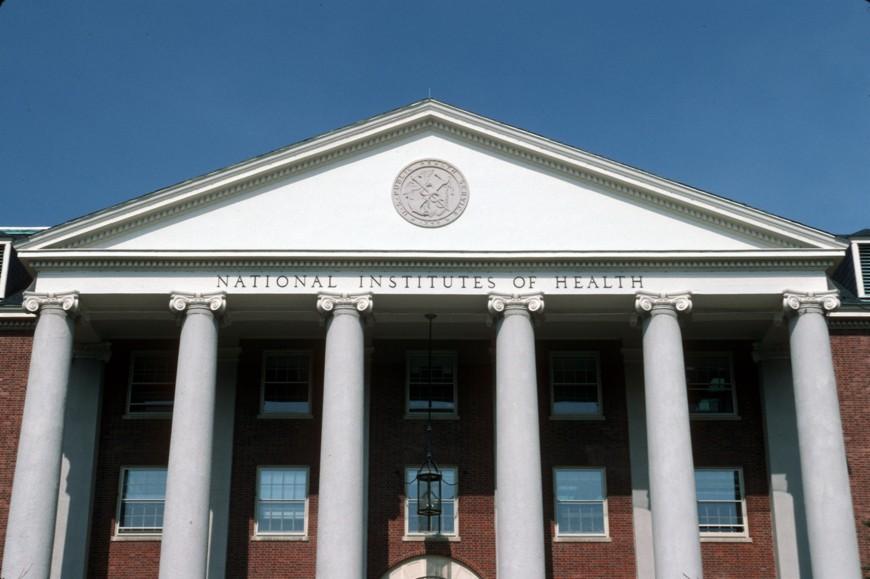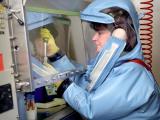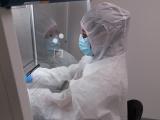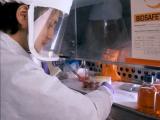The US National Institutes of Health (NIH) is preparing to reactivate a biosecurity advisory board that has been dormant for close to 2 years, and as part of that process, almost half of the board's voting members learned this week that that they will soon be replaced.
Although the move was not entirely unexpected, some of the 11 exiting members of the board said the timing is strange, as it comes in the wake of recent government lab safety lapses involving Bacillus anthracis, H5N1 avian flu virus, and smallpox virus.
The 11 departing members—nearly half of the 23-member voting roster—are the last of the original members of the National Science Advisory Board for Biosecurity (NSABB), which was established in 2005. The panel advises the government on biosecurity and "dual use research of concern" (DURC), or research that could be used to threaten public health.
Routine membership rotation?
In a statement e-mailed to CIDRAP News today, the NIH said the change in personnel is part of routine membership rotation and noted that the terms of the outgoing members had been extended several times.
The NSABB made frequent headlines in late 2011 and 2012, when it initially opposed publication of the full details of two studies that involved generating H5N1 viruses with airborne transmissibility in ferrets. The board later reversed the recommendation, but the vote on one of the studies was not unanimous.
NSABB Executive Director Mary Groesch, PhD, informed the 11 board members of their impending removal in a Jul 13 e-mail message.
"I wanted to tell you that a new slate of NSABB members has been approved as your replacements, and thus your service on the board is ending," she wrote. "Since you have all been so gracious as to extend your service for several years beyond your initial term, this may come as welcome news!"
She said the NIH plans to convene the board in the fall, when it will be asked for advice on educational materials that will be needed to support a new policy on institutional oversight of life-sciences DURC. The final version of that policy is due to be released soon, she added.
Paul Keim, PhD, of Northern Arizona University, an outgoing NSABB member and former chair, said that normally a few NSABB members should rotate off the board each year, but that wasn't done over the past 2 years.
"We were all surprised [by Groesch's memo], but mainly because of the silence for about 20 months," he told CIDRAP News. He is a microbiologist and Regent's Professor of biology at Northern Arizona and also directs the Pathogen Genomics Division at The Translational Genomics Research Institute.
"I think it's unfortunate that it happens right now in the midst of this crisis [of lab safety missteps], but on the other hand the US government has mothballed the NSABB for essentially 2 years," Keim said. "During that period there should've been a rotation of members off the board. That was the original intent."
"They had a backlog in rotating people off," he said. "It's just too bad they had to rotate so many experienced people off as they're facing this crisis."
He referred to the recent revelations about biosafety lapses involving B anthracis and H5N1 virus at Centers for Disease Control and Prevention (CDC) labs and the discovery of 1950s smallpox virus samples in a Food and Drug Administration (FDA) facility.
Keim and other members contacted by CIDRAP News said they're in the dark as to why the NIH has not convened the NSABB since November 2012. "We don't know why we were inactivated," he said.
Questions on board inactivity, timing of notice
In their statement to CIDRAP News today, NIH officials described the changing of the guard as routine but did not explain why the board has been inactive for so long.
"It is routine for federal advisory committees to rotate their membership over time so that fresh and diverse perspectives can be brought to bear on the committee's deliberations," the statement said. "Typically, only a portion of the board is rotated off at a time, so that the NSABB has members with 'institutional memory,' as well as individuals with new perspectives. Under special circumstances, membership terms can be extended, though they cannot be extended indefinitely.
"The terms of the individuals who received notification that their service on the NSABB had come to an end, had been renewed several times. The last time member terms were extended, those extensions were to last until replacement members could be found up until 2015, but not necessarily extending to that date, if less time was required for replacement members to be appointed.
"The decision regarding which members to rotate off the board is predicated on the length of service and the availability of replacement members. The individuals who were notified recently regarding their expiring terms are the last among the original board members to rotate off. This is part of the routine process of membership rotation."
The NIH said the names of the new NSABB members will be released before the board's next meeting. Groesch's memo said plans call for a meeting in September or October.
The current NSABB chair, Samuel L. Stanley Jr, MD, president of Stony Brook University in New York, was not available to comment on the development today. He is not among those rotating off the panel.
Another departing member, Michael Imperale, PhD, of the University of Michigan, said the outgoing members were initially appointed for 4-year terms, but the terms were extended because the NIH hadn't found replacements for them. He is a professor in and associate chair of the Department of Microbiology and Immunology.
Imperiale said he had "no idea" why the NIH picked this particular time to suddenly announce the change in members.
"I guess the related question is, why, after almost 2 years, did the NIH decide it's time to reconvene the board?" he added.
David Relman, MD, of Stanford University, another exiting NSABB member, called the NIH move "quite abrupt" and said he didn't know the reason for the timing, but added that he was not entirely surprised. He is a professor of medicine and of microbiology and immunology at Stanford and also is chief of infectious diseases at Veterans Affairs Palo Alto Health CareSystem.
"What has been far more upsetting has been the degree to which the board has been ignored and in essence, silenced during this past 2 years—2 years of rapidly evolving science, pressing unresolved issues, and great need for work and contributions by a board like this," Relman commented.
He said he has "some suspicion" that the change in members may be related to positions that members have taken in board deliberations, but has "nothing that I can support with objective evidence."
Keim, however, rejected any speculation that members are being dropped from the board for their views: "If they started targeting members for their positions, that would be a major transgression of the government advisory board policies. They did not target us for our views."
See also:
Roster of current NSABB voting members
Related Jul 15 ScienceInsider story

















